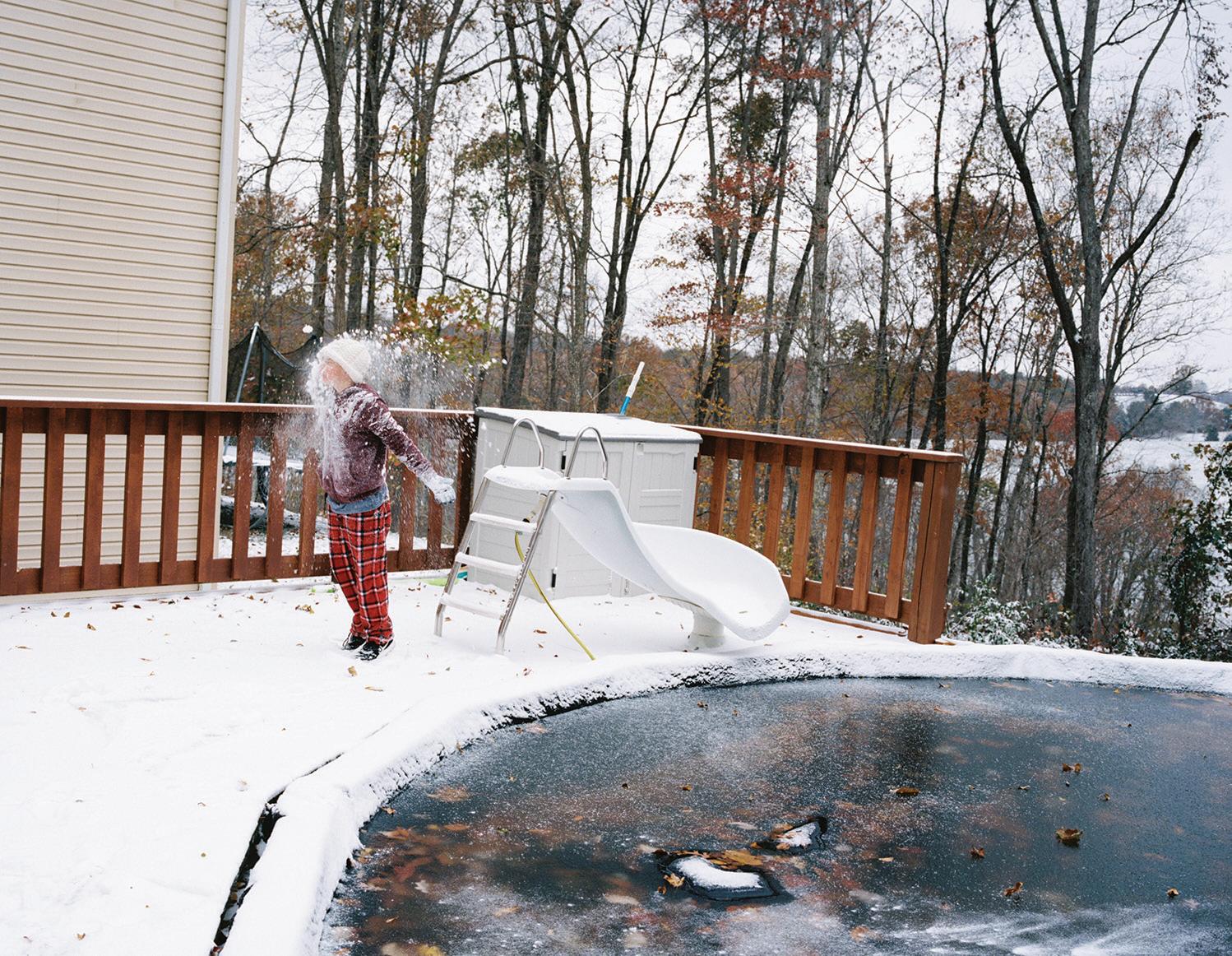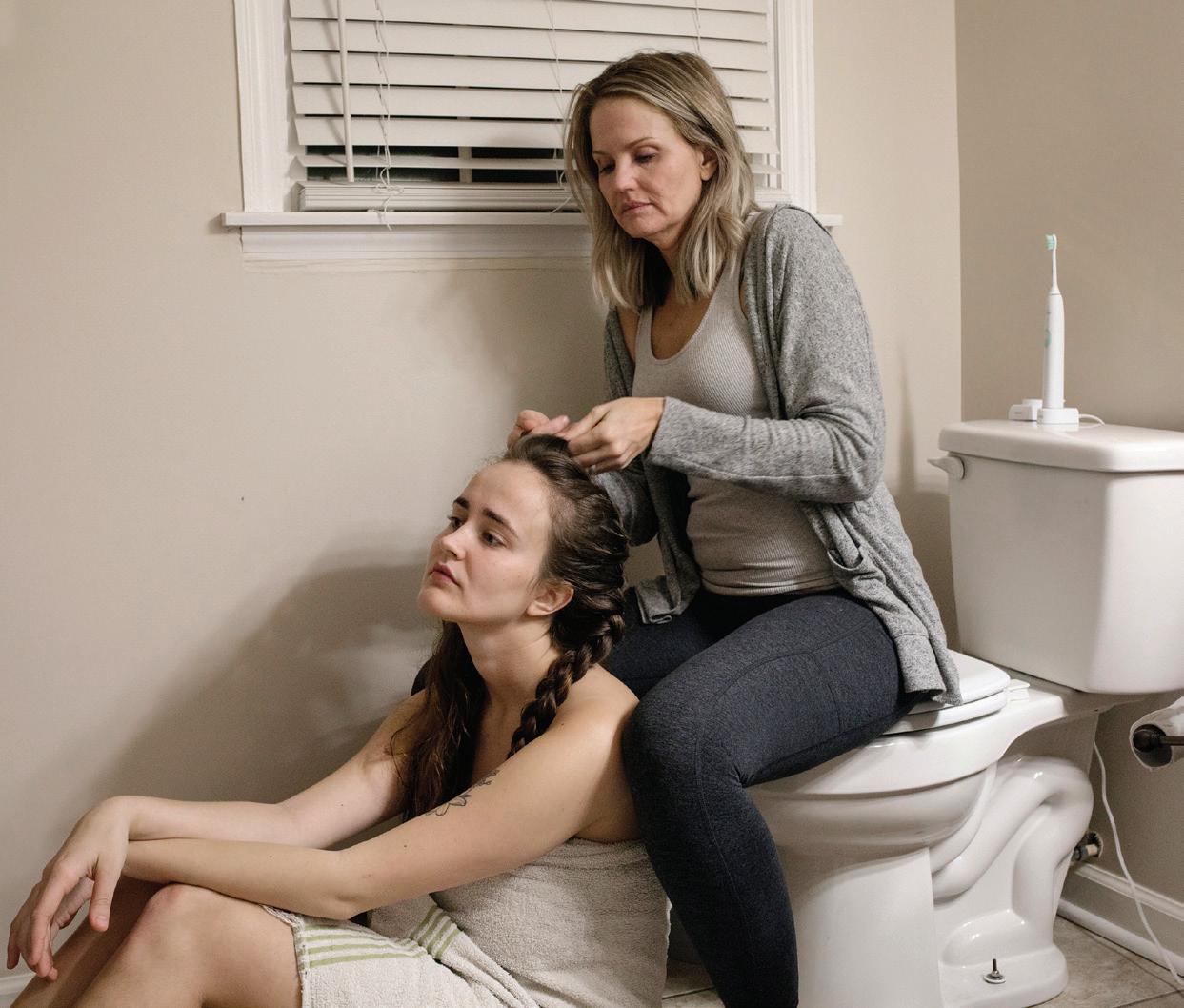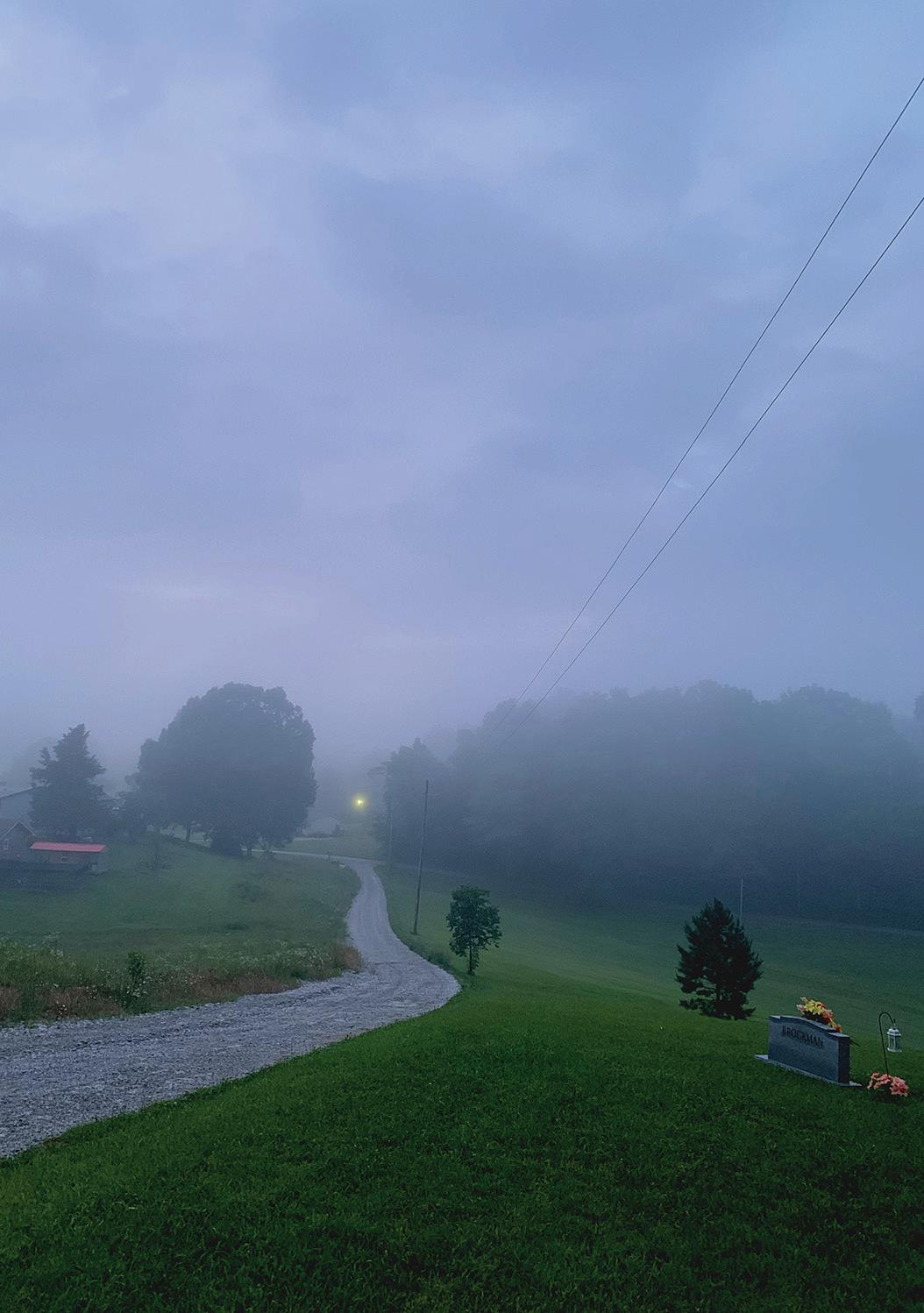
3 minute read
In the Eye of the Beholder
BY TINA V. BRYSON
Many people have tried to tell the story of Appalachia, but only succeeded in perpetuating a well-worn cliché. Morgan Hornsby, a documentary photographer from Eastern Kentucky, strives to find the artistic balance between capturing the truth and furthering the stereotype.
“I’ve certainly seen portrayals of Appalachia that rely on or reinforce stereotypes. These always made me feel uneasy, as they do anyone from here,” Hornsby said. “Sometimes, I am protective of Appalachia and I would rather show beauty than struggle. I am still trying to push past this to develop an honest narrative.”

She recently discovered the work of Breece D’J Pancake, a West Virginia writer who published a single collection of short stories before his death at age 27. Hornsby was inspired by how he captured the “particular magic of the region” without romanticizing it or avoiding harsh truths.
“In his writing, you could tell he loved the place,” said Hornsby, a graduate of Western Kentucky University and the Danish School of Media and Journalism. “I have lived, worked, and photographed away from home since college. I am continuously drawn to the place I’m from. As I begin to make work here, I hope that I can create images that are authentic without being stereotypical. Wherever I am working, I try to be knowledgeable of the place and subject matter, to listen to those I’m photographing, and to strive for collaboration when I can. I find this makes the most honest work.”
When COVID-19 led to stay-at-home orders and college campuses closed, it provided an opportunity for Hornsby to return to her family homeplace.
“I love filling the role of the family documentarian, as I’ve always been mesmerized by the family photo albums created by my mother and my grandmothers,” said Hornsby, who started photographing her family when she was just 16. “I like feeling like I am carrying on that tradition. Unlike the other women in my family, I’ve spent a lot of time away. I moved home in March to finish up my last semester of college remotely due to COVID-19. During this time, it felt very natural to document my family. The work changed a lot and is still changing. I also reckoned with my own feelings about the region — the deep ties I still feel, as well as the desire to live and work elsewhere.”

Of all the photos she has taken over these past few months, the photo of her mom braiding her hair in the bathroom struck a chord with her. “It was one of the first photos I took with myself in the frame and I really appreciated having that ritual documented,” she said. “It also illustrates the regression I felt by moving home during COVID-19, since living on my own and away from my family for the past five years. Sometimes I felt as if I was regressing by moving home, but in moments like these, it was nice to be with family and to feel cared for.”
When people see her photos, which are a snapshot of one family in Appalachia during COVID-19, she hopes that they take away something special too.
“There is a connection between the individual, family, and the land,” said Hornsby, whose work focuses on subjects like criminal justice and family. “In quarantine, many have rediscovered the importance and inevitability of these relationships, in Appalachia and elsewhere. I have felt lucky to be quarantined with people I love in a rural space, where I can be outside every day and enjoy a slower pace of life. I also hope that my love for the place and my family is present, and that folks outside of Appalachia see the beauty and magic within.”

DONATE
Donate to support children, their families, and seniors in need in Appalachia.
Christianpp.org/MtSpiritGive










